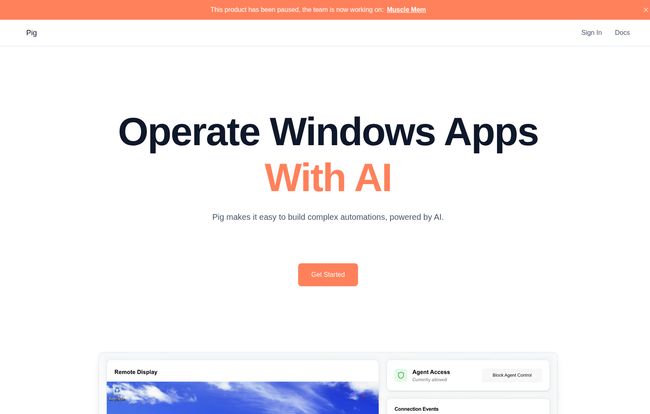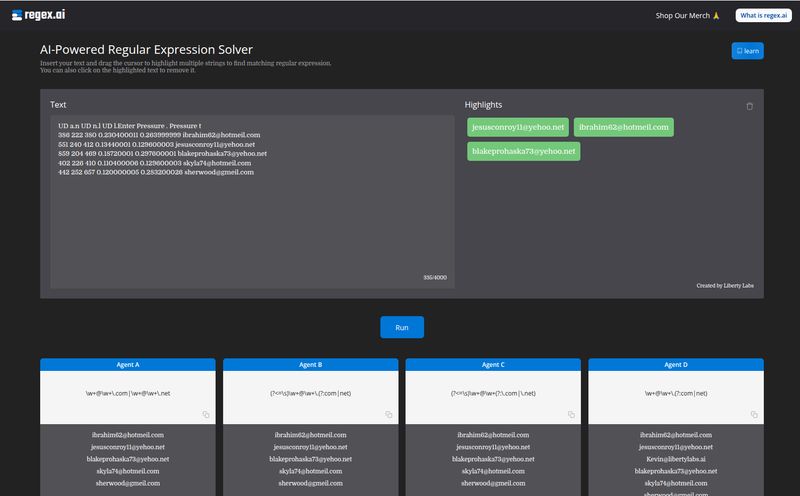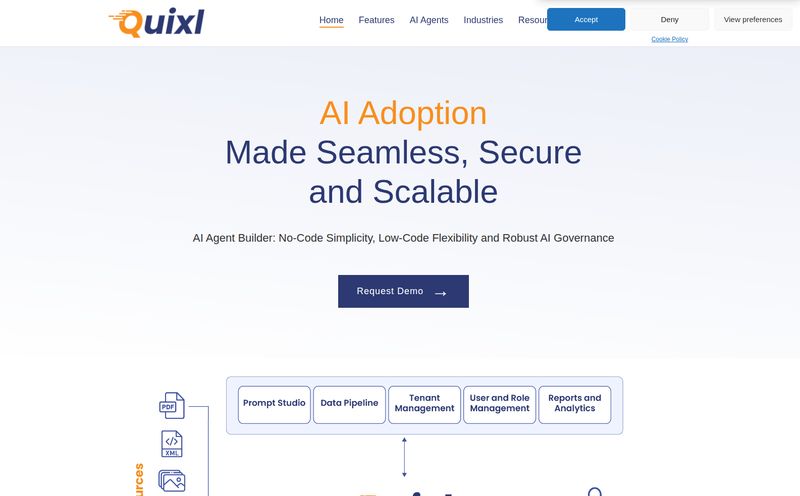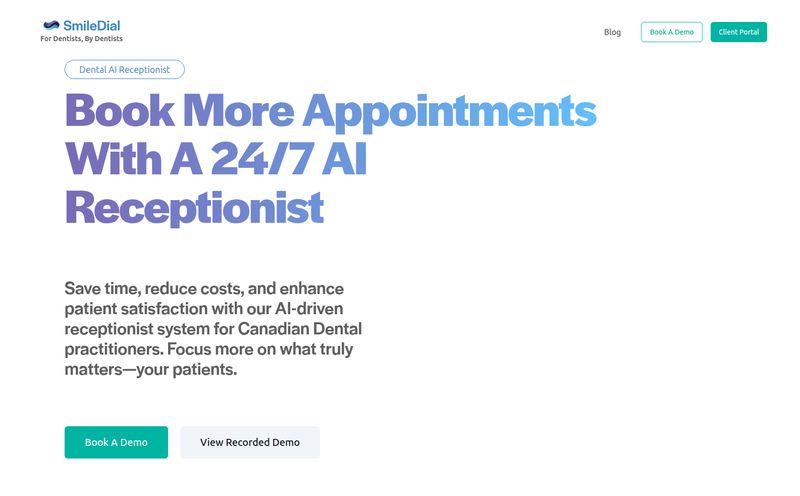If you've ever worked in operations, QA, or frankly, any desk job that involves repetitive tasks on a Windows machine, you know the pain. That soul-crushing, mind-numbing click-and-copy routine that makes you question all your life choices. For years, we've tried to solve this with a sort of digital duct tape. We’ve had brittle macros, scripts with more XPath selectors than a spider has legs, and of course, the venerable AutoHotkey, a tool I both love and fear.
They work. Sort of. Until a developer moves a button two pixels to the left and your entire workflow shatters into a million pieces.
So, when I first stumbled upon a tool called Pig, I felt that little spark of excitement. The tagline was simple, elegant: “API to automate Windows apps using AI.” Could this be it? The solution we’ve all been waiting for? It looked slick, intelligent, and built for the modern era. But, as with many brilliant things in the fast-moving tech world, there’s a twist in the tale. Stick with me, because this isn’t just a review; it's more of a tech post-mortem, and a look at what the future of automation could be.
So What Exactly Was Pig?
At its core, Pig was designed to be a ghost in the machine that you could actually talk to. The concept was beautiful in its simplicity. You connect your Windows PC to the Pig system, and then… you just tell it what to do. No more fiddling with screen coordinates or digging through source code to find a button’s ID. You could use a familiar chat interface, just like you would with ChatGPT, and issue commands.
Imagine typing: “Hey, open up our ancient accounting software, navigate to the ‘invoices’ tab, and pull the data from the last 24 hours into this Excel sheet.”
That was the dream. And Pig was trying to build it. A huge part of its appeal, for me at least, was that automations were self-hosted. This is a massive deal. In an age where we’re all (rightfully) paranoid about data privacy, sending sensitive customer or financial data to a third-party cloud service for automation can be a non-starter for many companies. Pig let you keep it all in-house, running on your own machines as workers in the system. Smart.

Visit Pig
A Two-Tiered System for Everyone
The team behind Pig was clever. They clearly understood that “automation” means different things to different people. So, they didn't just build one tool; they built a platform with two distinct entry points.
The Simple Chat for Quick Tasks
This was the gateway. The easy-in. For managers, analysts, or anyone who just needed to get a simple, repetitive task done without calling the IT department. The idea of prototyping a workflow without writing a single line of code is just… chef’s kiss. It lowers the barrier to entry so dramatically, turning automation from a developer-only task into something anyone in an organization could potentially use. This is the kind of democratization of tech that genuinely gets me excited.
The SDK for the Real Power Users
And then there was the other side of the coin: the SDK (Software Development Kit). This was for the coders, the QA engineers, the data scientists. This is where you could build your own complex agents, packed with custom logic, conditional flows, and all the good stuff. The images on their site showed Python code that looked clean and intuitive.
from pig import client # Initialize client and select machine client.init() machine = client.machines.get(‘E-B04DA2K-N14GSVA-P34G0H2’) # Connect to the machine with machine.connect() as conn: # ... your automation logic here conn.left_click(x=200, y=400) What really stood out to me here was the inclusion of a “Humans in The Loop” feature. This is not just a feature; it’s a philosophy. It’s an admission that AI isn’t magic. It gets stuck. It misinterprets things. By building in a seamless way to hand control over to a human when the bot gets confused, Pig was designed for the real world, not a perfect-world demo. It’s the difference between a cool tech demo and a tool you could actually bet your operations on.
Why I Was Genuinely Rooting for Pig
I’ve seen a lot of automation platforms. A lot. Most are either too simplistic to be useful or so complex they require a dedicated team to manage. Pig seemed to hit that sweet spot.
- Tackling the Windows GUI nightmare: Automating native Windows apps is notoriously difficult. Web automation has tools like Selenium and Playwright, but for that clunky desktop app from 2005? Good luck. Pig’s AI-driven approach, which likely used computer vision to identify elements rather than relying on brittle selectors, was the right way to solve this.
- Security-first with self-hosting: I mentioned this before, but it bears repeating. Giving companies control over their own data and infrastructure isn't just a feature, its a sign of respect for the customer.
- Practicality over purity: The human-in-the-loop design shows a deep understanding of the current state of AI. It’s not perfect, and pretending it is leads to frustrating products. Pig embraced the imperfection and made it a strength.
The Inevitable But: So, What Happened?
If you go to Pig’s website today, you’ll be greeted by an orange banner at the top. “This product has been paused, the team is now working on Muscle-Mom.”
Oof. That one stings a little. A great idea put on ice.
While we can only speculate, we can make some educated guesses based on the inherent challenges of such a product. The “cons” were real. Being Windows-only, while a huge market, cuts you off from the growing number of businesses running on macOS and Linux. The SDK, while powerful, might have still been too high a technical barrier for the mainstream adoption they needed. And the big one, the unshakeable challenge: AI accuracy. Visual AI is leaps and bounds ahead of where it was, but it's still not 100%. One Windows update, one change in font rendering, one quirky app that doesnt follow standard UI conventions, and the AI can get lost. That can be a support nightmare and erode user trust.
Perhaps the market wasn't quite ready, or the problem was just ten times harder to solve reliably than it appeared on the surface. Or maybe, just maybe, the team had an even better idea in Muscle-Mom (which appears to be in the fitness space—a pivot if I've ever seen one!). Building a startup is about finding that product-market fit, and sometimes the first great idea isn't the one that sticks. It's a tough part of the business, but a real one.
Frequently Asked Questions About Pig AI
What was Pig AI?
Pig was a platform designed to automate tasks within Windows applications using artificial intelligence. It offered both a simple chat-based interface for non-developers and a more advanced SDK for developers to build custom automation agents.
How did Pig AI work?
Users would connect their Windows machine to the Pig service, which would install an agent. Then, through a chat or API, they could instruct the AI agent to perform actions like clicking buttons, typing text, and opening applications, with the AI visually interpreting the screen to carry out the tasks.
Was Pig AI free?
There was no public pricing information available before the project was paused. Like many developer-focused tools, it might have had a free tier or trial, with paid plans for more extensive use, but this was never confirmed.
Why was the Pig project paused?
The official reason stated on their website is that the team has pivoted to work on a new project called Muscle-Mom. The underlying reasons could be anything from technical challenges with AI accuracy to difficulties finding a strong product-market fit or a more promising business opportunity.
Are there good alternatives to Pig AI?
Yes, several tools exist for Windows automation, though they may have a steeper learning curve. Microsoft Power Automate is a powerful, integrated option. AutoHotkey is a free, script-based classic for power users. For more visual, RPA-focused tools, platforms like UIPath and Automation Anywhere are industry leaders.
What is the team behind Pig working on now?
According to their website, the team is now focused on a new venture called Muscle-Mom.
A Promising Idea, A Lesson Learned
So, we pour one out for Pig. It was a genuinely exciting concept that tackled a real, persistent problem in a smart, modern way. It combined a low-floor, high-ceiling approach with a pragmatic view of AI's current capabilities. While it’s a shame to see it paused, it's also a fantastic case study in innovation. The ideas it championed—conversational automation, self-hosted security, and human-in-the-loop AI—aren't going away. Someone else will pick up this torch.
For now, we’ll have to go back to our trusty, if sometimes frustrating, scripts and macros. But Pig gave us a glimpse of a better way. And for that, it was a success, even if it's no longer with us. Here's wishing the team the best of luck with Muscle-Mom—I'm curious to see what they build next.
Reference and Sources
For further reading and to see the projects mentioned:
- The paused Pig project homepage (as of this writing):
https://www.pig.io/ - The team's new project: Muscle-Mom
- Microsoft's automation tool: Power Automate
- The classic scripting tool for Windows: AutoHotkey



